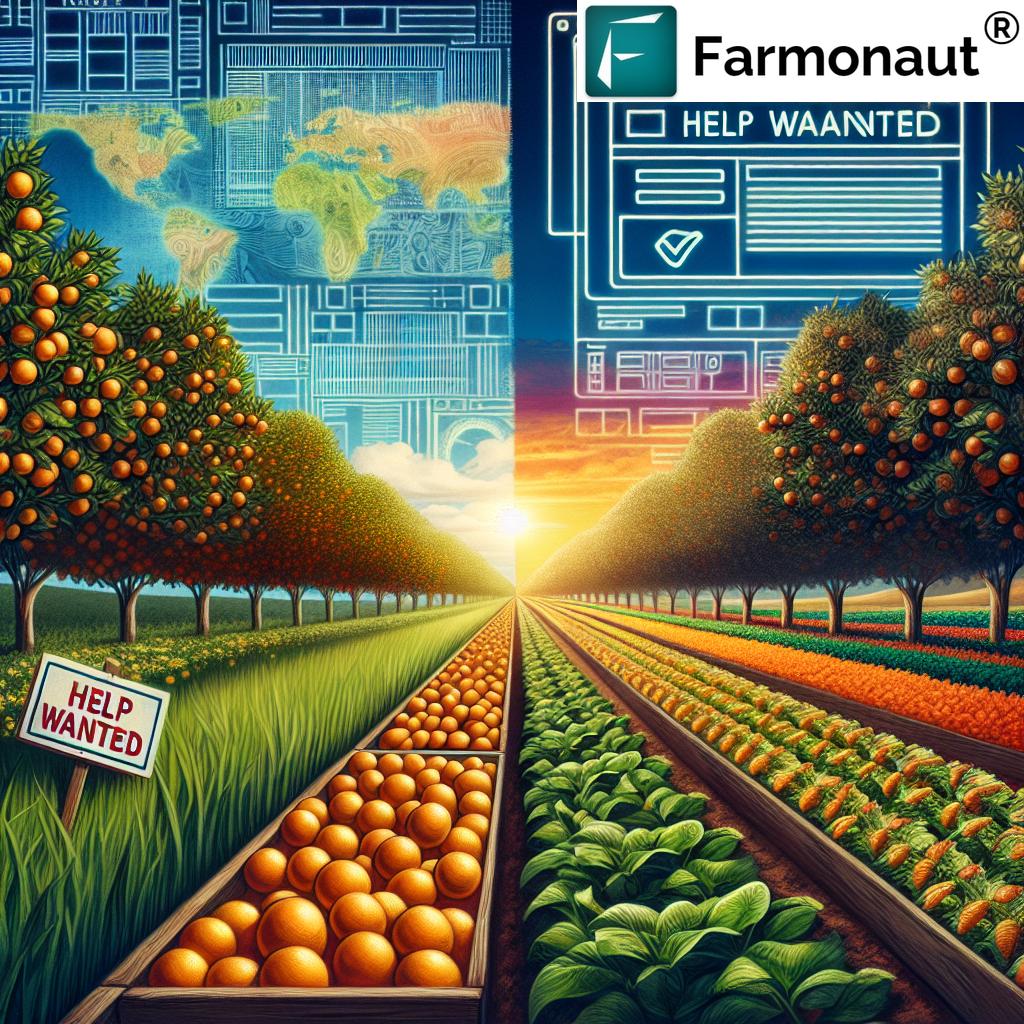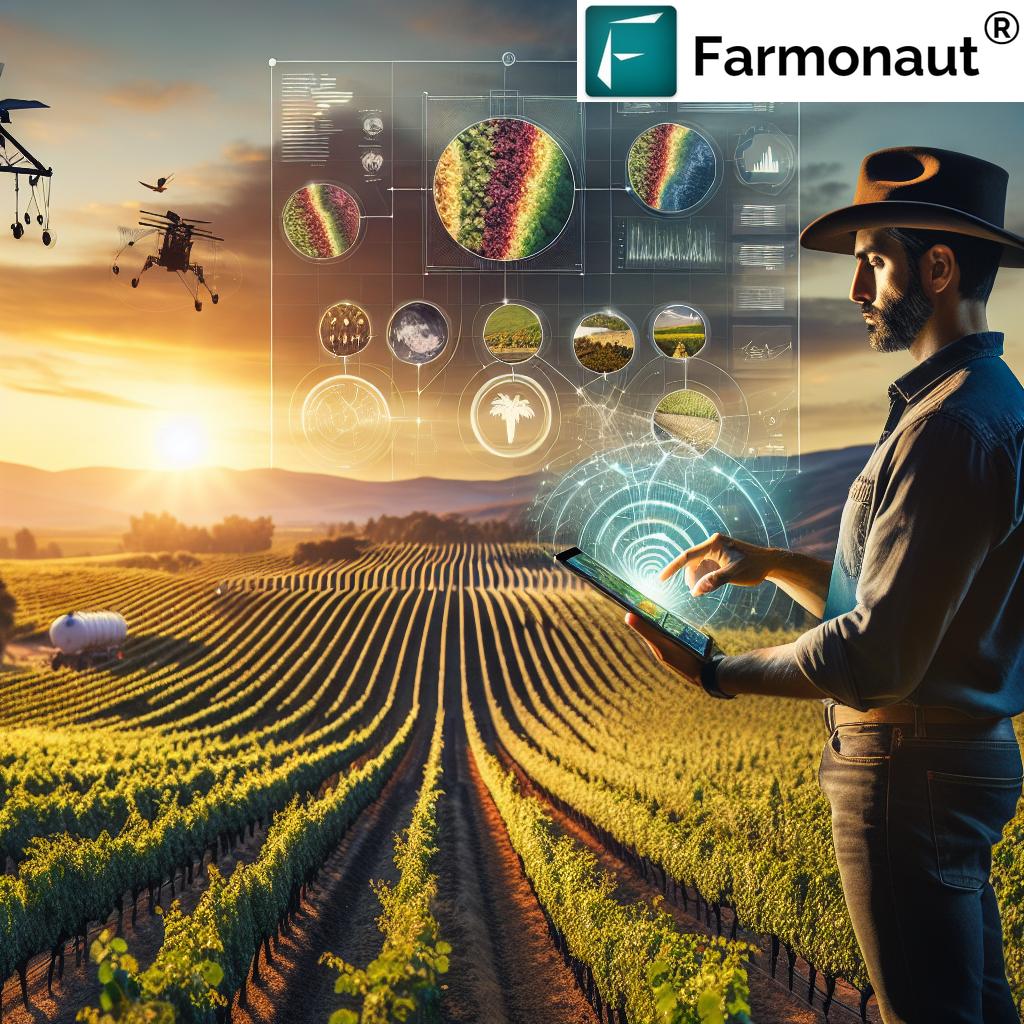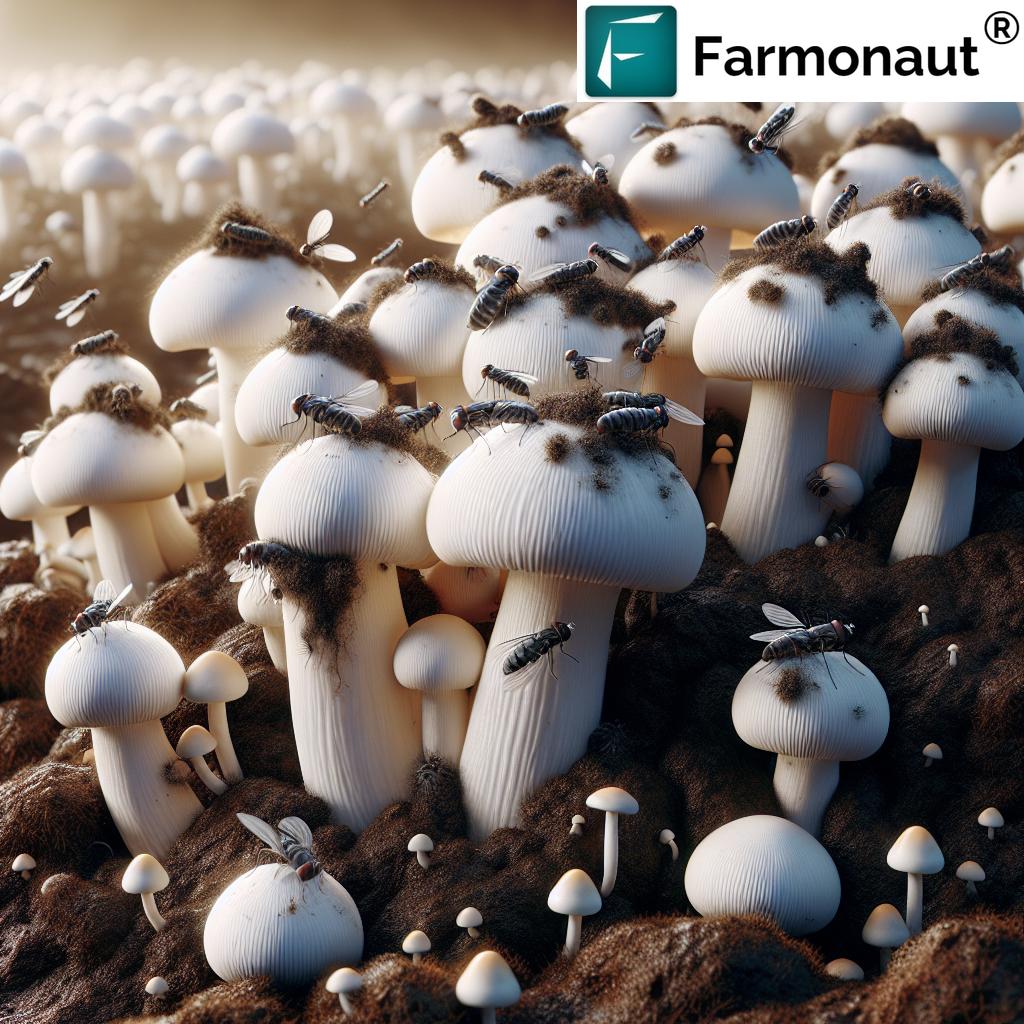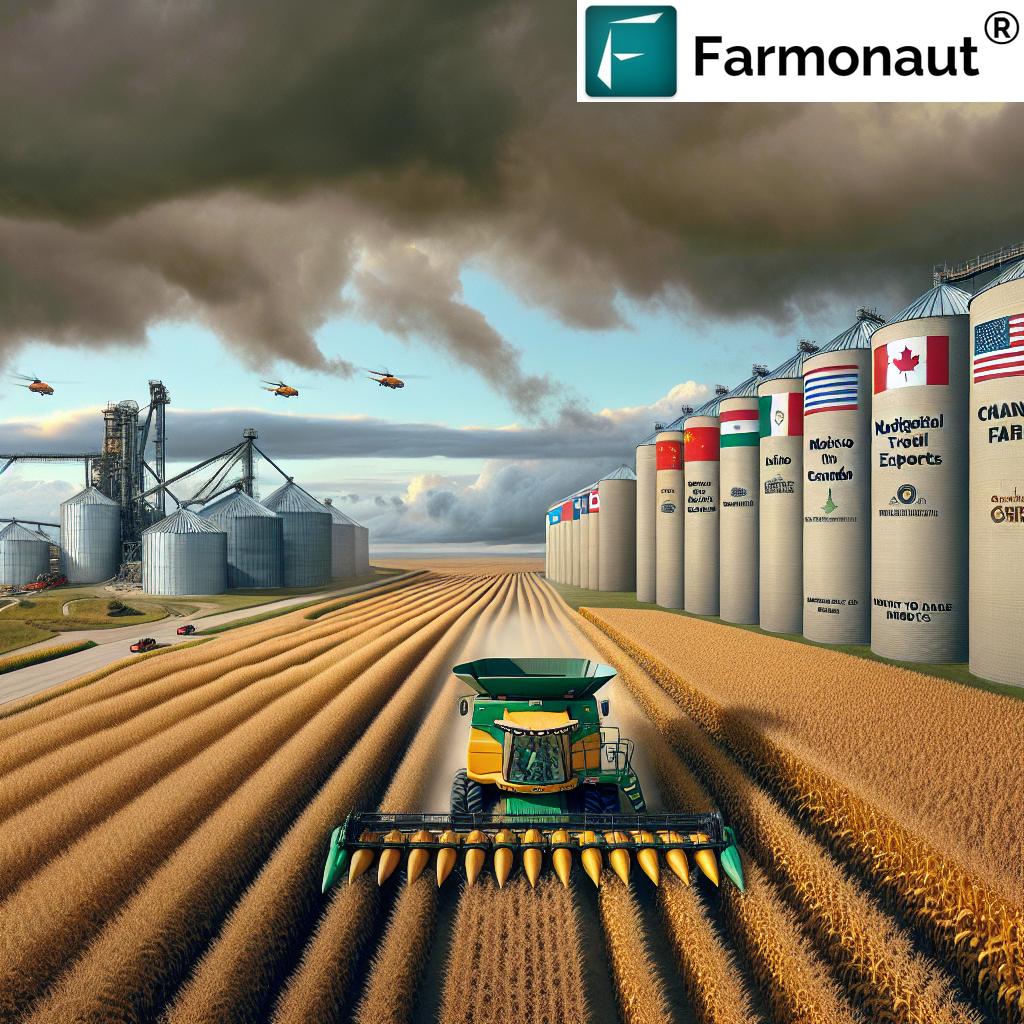Table of Contents
- Introduction: CBOT Cotton, Boll Formation & Price Trend in USA
- Key Trivia: Market Surge & Technological Advances
- The US Cotton Industry: A Critical Agricultural Pillar
- Understanding CBOT Cotton Futures as Market Indicators
- Cotton Boll Formation & Its Agricultural Significance
- Precision Agriculture in 2025: Transforming Boll Formation
- Environmental Challenges Affecting Cotton Yield
- Regional Focus: Texas, Mississippi & Arkansas Dynamics
- Comparative Analysis Table: 2023–2025
- CBOT Cotton Price Trend in USA: Futures, Supply & Demand
- Trivia: Precision Agriculture Impact in 2025
- 2025 Outlook: Cotton Yield, Prices, and Market Dynamics
- Farmonaut: Catalyzing Precision Agriculture via Satellite Technology
- Frequently Asked Questions (FAQ)
- Conclusion
CBOT Cotton, Boll Formation & Price Trend in USA (2025 Guide)
The cotton industry remains one of the most vital pillars of American agriculture, particularly as we venture into 2025 and beyond. With the USA being among the world’s leading producers and exporters of cotton, understanding the CBOT cotton price trend in USA, the science of cotton boll formation, and how precision agriculture is redefining yield and market outcomes is critical. This comprehensive guide delves into the interconnected factors shaping American cotton farming, emphasizing technological and environmental dynamics—especially for key regions such as Texas, Mississippi, and Arkansas.
“CBOT cotton futures surged 12% in 2024, driven by advanced biotech improving boll formation and yield stability.”
The US Cotton Industry: A Critical Agricultural Pillar
Cotton is far more than a staple fiber crop; it’s a critical sector underpinning American agriculture and the broader textile economy. As the USA remains one of the world’s leading producers and exporters of cotton, particularly in states like Texas, Mississippi, and Arkansas, the industry supports rural economies, generates jobs, and fuels trade flows. Over the past decade, American cotton has increasingly relied on technology and real-time data for yield optimization and sustainability.
- Texas—Largest cotton producing region, often comprising over 40% of US output.
- Mississippi—Renowned for fertile soils and advanced farming practices.
- Arkansas—Significant for its resilient cotton varieties and proximity to key export corridors.
Shifting weather patterns, ever-evolving agronomic practices, and the digitization of market indicators like CBOT cotton futures have become hallmark features shaping this industry.
Understanding CBOT Cotton Futures as Market Indicators
CBOT cotton futures—contracts traded on the Chicago Board of Trade—are central to the price discovery process. The CBOT offers a transparent, regulated platform where growers, traders, and manufacturers hedge against price volatility, forecast input costs, and plan harvests with greater certainty. By closely tracking these market movements and globally significant indicators, participants gain a real-time pulse on evolving cotton price trend in USA as well as international benchmarks.
- CBOT prices reflect a complex interplay of global supply-demand, economic conditions, and climatic factors.
- They are widely tracked and analyzed by the entire industry—from farmers to textile manufacturers.
In 2025, CBOT cotton prices remain moderately positive but volatile, shaped directly by domestic weather patterns, input costs, international trade dynamics, and the rapid adoption of biotechnology and precision agriculture.
Cotton Boll Formation & Its Agricultural Significance
The journey from planting to prosperous harvest centers around the “boll”—the compartment where fibers and seeds form. Cotton boll formation is a vital stage directly impacting yield and fiber quality. Understanding the scientific nuances and technological interventions at this stage is key for modern farming.
What is a Cotton Boll?
- The boll houses cotton fibers and seeds—the very products harvested and processed for the textile market.
- It begins to form approximately 30-35 days after flowering.
- Its successful development hinges on optimal soil moisture, temperature, and pest management during the most sensitive phases of cultivation.
Key Phases in Boll Formation
- Flowering: Cotton plants transition from vegetative growth to the reproductive phase, with flowers typically appearing 6–8 weeks after planting.
- Boll Setting: About 5 days post-pollination, the fertilized ovary swells and starts forming the cotton boll.
- Boll Development: Spanning 30–35 days, this stage demands balanced soil moisture and temperature control, as both fiber length and strength are set during this window.
- Boll Maturation: The final stage, when bolls open, exposing fluffy cotton ready for harvest. Environmental factors like drought or excess rain can delay or compromise this maturation.
Why Everybody in the Industry Cares: The Agricultural Significance
Cotton boll formation is not just a biological curiosity—it is the linchpin affecting total yield, fiber quality, profitability, and even the broader cotton price trend in USA. Unsuccessful or inconsistent formation can lead to:
- Lower yields and reduced fiber quality in the final product.
- Economic losses for farmers, traders, and the entire supply chain.
- Market price spikes when supply is squeezed due to poor boll retention.
Thus, improvements in this stage—through agronomic practices and technological innovation—have cascading effects across the American and global cotton sectors.
Precision Agriculture in 2025: Transforming Cotton Boll Formation
Precision agriculture represents a major turning point for the cotton sector in 2025, especially for enhancing boll formation and yield stability. Modern farming increasingly involves technologies like sensors, drones, and satellite monitoring to improve all phases of cotton growth and environmental management.
- Soil moisture sensors help farmers optimize irrigation precisely during flowering and boll-setting phases, reducing water waste and ensuring optimal plant health.
- Remote and drone monitoring provide real-time insights into pest activity (e.g., bollworm), disease outbreaks, and microclimatic variations across large fields.
- AI-driven advisory tools support evidence-based decisions to minimize input costs while maximizing fiber quality and yield.
Platforms like Farmonaut’s satellite-powered solutions enable real-time monitoring of cotton fields, soil management, and environmental impact. With live NDVI imagery, predictive analytics, and advisory systems, us as a technology provider empower farmers and businesses to optimize the sensitive processes critical to cotton boll formation. Learn more about fleet management for large-scale agriculture and how it enhances resource use in cotton farming.
As we look to 2025, the adoption rate of precision ag tech in cotton farming is projected to exceed 60%—a quantum leap compared to the 2023 baseline.
- Direct yield improvements through improved boll retention
- Reduction in input costs and better resource allocation
- Enhanced traceability and compliance with sustainability mandates—see traceability for cotton supply chains for more
- Actionable environmental insights—visit our carbon footprinting page for climate impact analytics in agriculture
Environmental Challenges Affecting Cotton Yield
Environmental stressors remain a challenge to successful cotton production. The 2025 outlook anticipates heightened unpredictability of weather patterns and increased frequency of extreme climatic events.
- Heatwaves and sporadic rainfall in southern states like Texas can cause boll shed, delayed maturation, or even fiber discoloration during critical stages.
- Pest infestations—particularly bollworms—can devastate boll retention if not swiftly addressed.
- Soil-related issues such as waterlogging, salinity, or nutrient deficiencies may further diminish yield potential and impact fiber quality.
Innovative responses include the wider adoption of genetically improved cotton varieties—especially those engineered for enhanced drought tolerance and resistance against pests like bollworm. These biotech cultivars are now widely adopted in regions like Arkansas and Mississippi where climatic stressors are pronounced.
- Yield and fiber quality become more consistent, enhancing market reliability.
- Farmers rely on advanced scouting, satellite data, and AI tools to proactively address emerging stressors.
Monitoring solutions like ours help secure profitable harvests despite unpredictabilities. Combined with blockchain-based traceability, these solutions ensure compliance with global textile demands for quality assurance.
Regional Focus: Texas, Mississippi & Arkansas Dynamics
Texas, Mississippi, and Arkansas are at the epicenter of American cotton production, each facing unique challenges and capitalizing on technological advancements differently.
- Texas: Largest cotton-growing region. Recently battled with drought and pest incursions, leading to heightened adoption of AI-powered irrigation scheduling and genetically improved cultivars.
- Mississippi: Known for balanced rainfall but prone to heatwaves. Local growers are “precision-first”—drone-based pest control and satellite NDVI monitoring have become routine.
- Arkansas: Focused on soil health, incorporating multispectral imagery and blockchain traceability to ensure sustainability and high export value.
Across all regions, the focus keyword—”CBOT cotton, cotton boll formation, cotton price trend in USA”—is visible not only in market analysis, but in local policy debates, sustainability initiatives, and the strategic adoption of digital agriculture.
Comparative Trend Analysis Table: 2023–2025
(Boll Formation, Yield, Price & Technology)
| Year | Boll Formation Rate (%) | Average Yield (lbs/acre) | CBOT Cotton Price (cents/lb) | Precision Ag Tech Adoption Rate (%) | Estimated Fiber Quality Index |
|---|---|---|---|---|---|
| 2023 (Baseline) | 72 | 885 | 82 | 28 | 7.5 |
| 2024 (Transition) | 78 | 930 | 92 | 46 | 8.3 |
| 2025 (Projected) | 83 | 1005 | 94 | 64 | 8.9 |
This table reflects the clear impact of precision technologies and genetic advances on American cotton. As technology adoption rises, both boll formation rate and yield trend upwards, while the CBOT cotton price trend in USA stabilizes due to consistent supply, even amid climatic volatility.
CBOT Cotton Price Trend in USA: Futures, Supply & Demand
The CBOT (Chicago Board of Trade) remains the principal platform for American cotton price discovery. By trading cotton futures, market participants—from growers to textile manufacturers—gain crucial insight into price dynamics, risk mitigation, and forward planning.
Major Drivers of the Price Trend
- Domestic factors: Weather anomalies in Texas or Arkansas, rising labor costs, and input price shifts shape regional supply curves.
- International trade: Tightening global supplies due to Indian or Brazilian crop failures can cause price spikes on the CBOT.
- Demand shifts: Global consumer trends (organic textiles, recycled fibers) and trade policies directly impact the demand for American cotton.
- Input costs: Increases in fertilizer or fuel prices raise break-even levels for US farmers, pushing up the bottom line CBOT cotton prices.
In 2025, prices are projected to remain moderately bullish, with bouts of volatility tied to climatic events and international macroeconomics.
Advanced monitoring and predictive analytics tools, like those offered through Farmonaut’s API (API for real-time cotton field monitoring and analytics | Developer Docs), allow for granular tracking of field stressors and market movements, facilitating data-backed risk mitigation strategies.
“Precision agriculture in the US cut cotton input costs by 18% and increased boll counts by over 15% for 2025.”
2025 Outlook: Cotton Yield, Prices, and Market Dynamics
The cotton price trend in USA in 2025 is a balance of opportunity and volatility. As the supply chain becomes more transparent and sustainability gains prominence among buyers, precision technology adoption will remain the differentiator for profitability and risk management.
- Yield Expansion: Precision monitoring directly increases average yields and improves fiber quality index—critical for export competitiveness.
- Price Moderation: Consistent boll formation and improved supply stabilize prices, reducing wild swings detrimental to global textile planning.
- Sustainability & Traceability: Environmental compliance is no longer optional. Blockchain, AI, and carbon footprint tracking are now core to market access. (Learn more about climate responsible cotton farming)
As 2025 unfolds, the American cotton sector continues to navigate shifting weather, economic conditions, and technology breakthroughs. Those who adapt—by leveraging digital solutions and precision interventions—enjoy greater yield, price security, and market reliability.
Farmonaut Subscription Plans for Advanced Agricultural Monitoring
Farmonaut: Catalyzing Precision Agriculture via Satellite Technology
At Farmonaut, we deliver affordable, accessible satellite-driven insights for the cotton sector and beyond. Our mission is to democratize precision agriculture—empowering farmers, agribusinesses, and governments to:
- Monitor fields in real-time, from vegetative stages through boll formation, using high-resolution NDVI and multispectral satellite data.
- Predict yield and anticipate market moves with AI-based advisory integrated with CBOT price and climatic risk assessment.
- Ensure traceability and transparency in cotton supply chains using blockchain technology, critical for global textile buyers.
- Optimize resource allocation—from irrigation to pest control—reducing input costs and improving environmental stewardship.
- Report and reduce carbon footprint, aligned with stringent regulatory and consumer preferences.
Whether you’re an individual farmer, large agribusiness, or government stakeholder, Farmonaut’s modular platform (see large-scale farm management solutions) scales to your needs.
- API integrations allow for seamless data ingestion, operational planning, and reporting.
- Real-time alerts enable timely action on environmental or market risks.
- Integration with financial and insurance providers expedites agricultural loans and insurance using objective satellite proof.
Explore more about our crop plantation and forest advisory for data-powered decision making in sensitive environments.
Accessible via Android, iOS, browser app, and API.
Frequently Asked Questions (FAQ)
What impacts cotton boll formation the most?
Cotton boll formation is most influenced by soil moisture, temperature, and pest management during the sensitive flowering and development phases. Technological interventions—like precision irrigation and real-time monitoring—dramatically boost formation rates and final yield by enabling timely, targeted responses.
Why are CBOT cotton futures so important for US farmers?
The CBOT cotton futures market, hosted by the Chicago Board of Trade, provides a transparent and regulated platform to manage risk and forecast income. By using CBOT indicators, farmers hedge against price fluctuations, plan better for input costs, and align harvest strategies with market trends.
How is precision agriculture changing cotton farming?
Precision agriculture leverages sensors, drones, and satellite technology to optimize every step: from soil analysis through boll maturation. It helps in reducing input costs, boosting yield, improving fiber quality, and supporting sustainability—all while ensuring robust defense against pests and climate variability.
Is sustainability now a requirement for cotton exports?
Yes, both domestic and global buyers of American cotton increasingly require sustainability credentials. Technologies for carbon footprint tracking and blockchain traceability help producers meet these demands and maintain market access, especially in premium textile markets.
How can Farmonaut’s solutions help cotton farmers or businesses?
We offer advanced satellite and AI-driven tools for real-time field monitoring, yield forecasting, environmental compliance, and blockchain-based traceability. Our platform lowers the barriers to high-tech data for all scales of cotton farming—helping secure higher yields, profitability, and regulatory compliance.
Conclusion: Navigating the Future of US Cotton
In 2025 and beyond, the intersection of cotton boll formation, CBOT cotton futures, and technological innovation defines the fate of the American cotton sector. As precision agriculture and biotechnology take hold, farmers and industry stakeholders can rely on advanced tools and platforms—like those from Farmonaut—for superior monitoring, risk management, and sustainability.
Whether in the fields of Texas, the floodplains of Mississippi, or the innovative corridors of Arkansas, success means staying ahead of climatic uncertainty, market fluctuation, and global trade pressures. The combination of real-time monitoring, AI advisory, blockchain traceability, and sustainable practices ensures the US cements its status as a world leader in reliable, high-quality, and responsible cotton production.
This is not just the story of yield or price—but the story of adaptation, technology, and the enduring legacy of American agriculture, as told through the language of “cbot cotton, cotton boll formation, cotton price trend in usa.”















